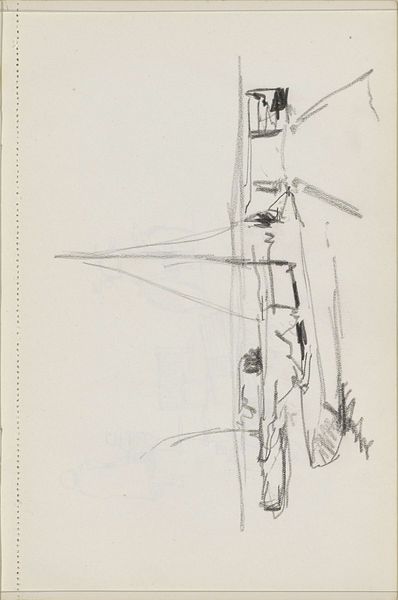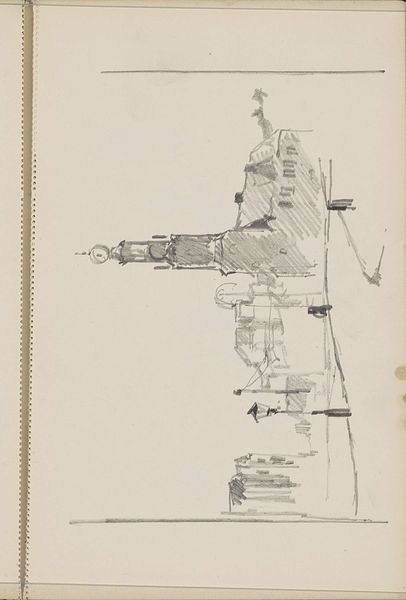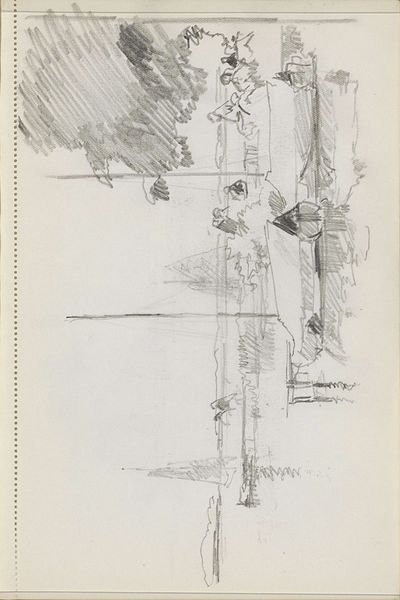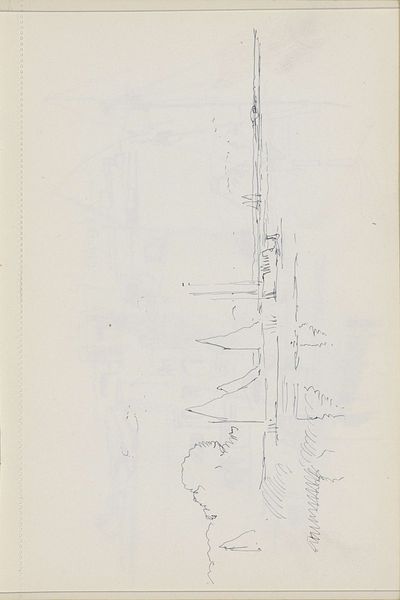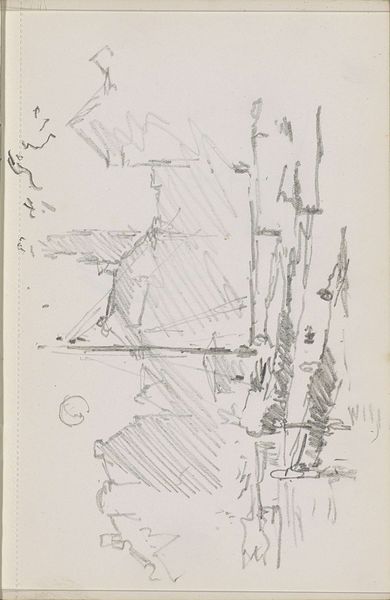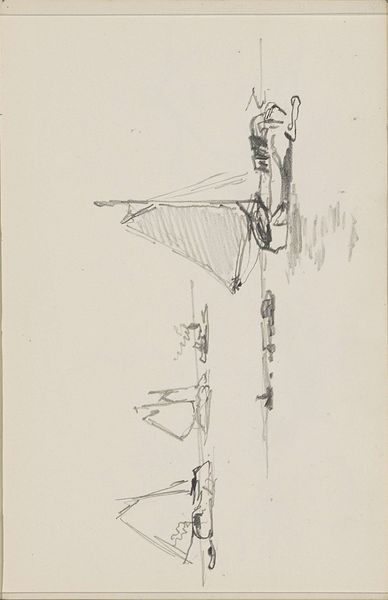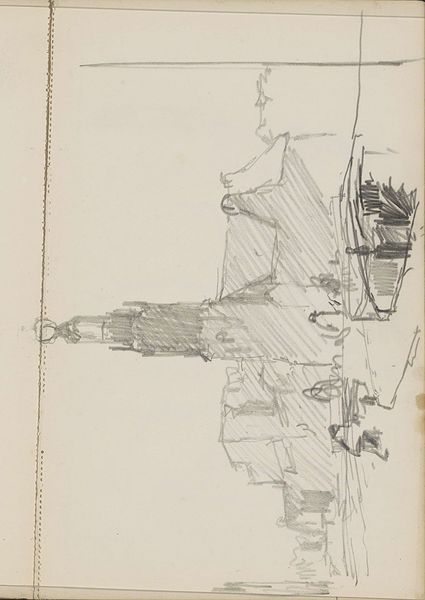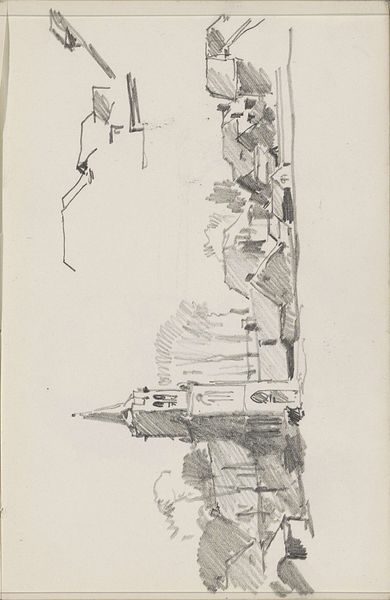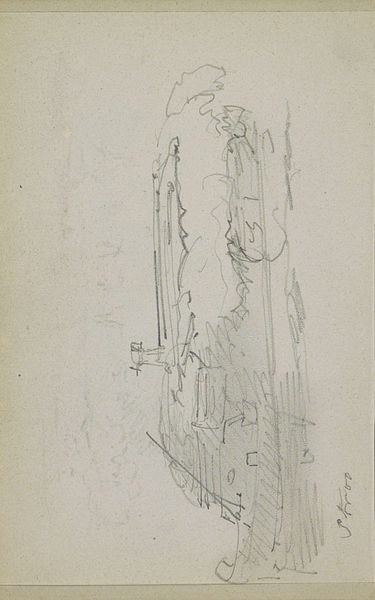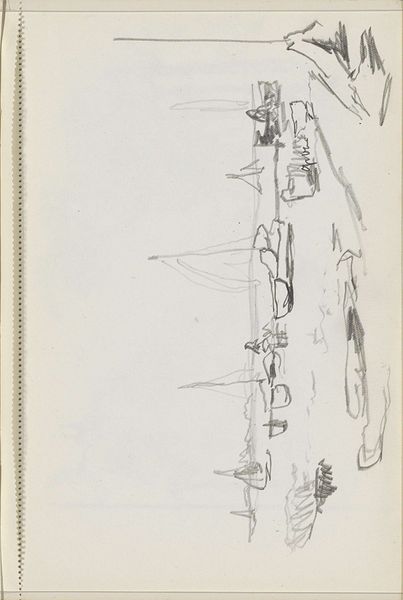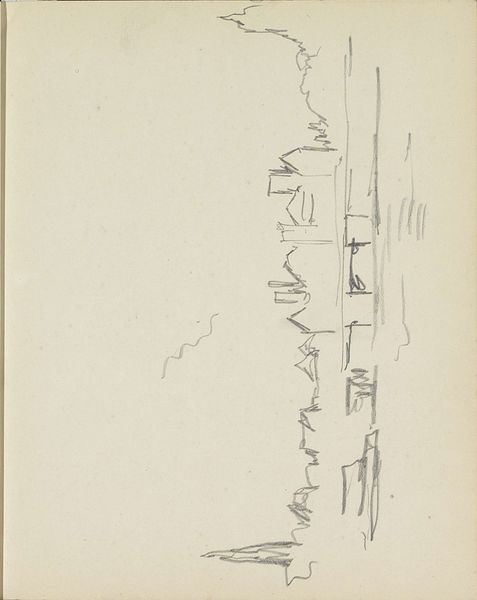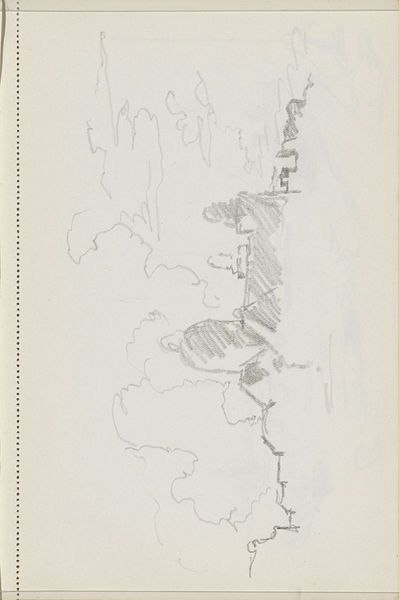
drawing, pencil
#
drawing
#
landscape
#
etching
#
geometric
#
pencil
#
architecture drawing
#
cityscape
Copyright: Rijks Museum: Open Domain
Curator: I see a fleeting impression, almost dreamlike. The light pencil strokes create an airy, ephemeral feeling. Editor: Indeed. The work is titled "Zeilschepen bij een aanlegsteiger," or "Sailing Ships at a Pier," and it’s attributed to Cornelis Vreedenburgh, dating sometime between 1890 and 1946. It's currently held here at the Rijksmuseum. Curator: Those repetitive triangles are very striking. The sailboats almost resemble ancient glyphs; it reads as a collection of symbols from a forgotten maritime culture. There’s something totemic about that central pier, almost like a pillar connecting sea and sky. Editor: Formally speaking, the artist's method of hatching, the cross-sections and parallel lines used for shading, lends texture while emphasizing volume with minimal contour lines. It abstracts the vessels, rendering them archetypes, which probably strengthens that impression. Curator: Do you think this abstraction was a conscious attempt to convey a specific emotional experience, like longing or nostalgia? Because the way that pier, which acts as a clear central axis for the work, creates a division between reality and reflection hints to me that there's also a division between memory and physical spaces of return and departures. Editor: Potentially, but I can’t say. I hesitate to impose definitive meaning when the power is also in its fragmented incompleteness. The perspective pulls upward, refusing stable ground. The white space becomes as important as the drawn lines; the negative space activates the piece and directs the eye. Curator: Perhaps we are looking at both an object and an emotion captured within an urban seascape. A yearning embedded in the skeletal bones of an industrial infrastructure. Editor: Precisely. Vreedenburgh presents us with a fascinating tension: simple materials evoking deep resonances. Curator: A dialogue between past and present. Editor: And a masterful orchestration of line and form, where absence truly speaks volumes.
Comments
No comments
Be the first to comment and join the conversation on the ultimate creative platform.
